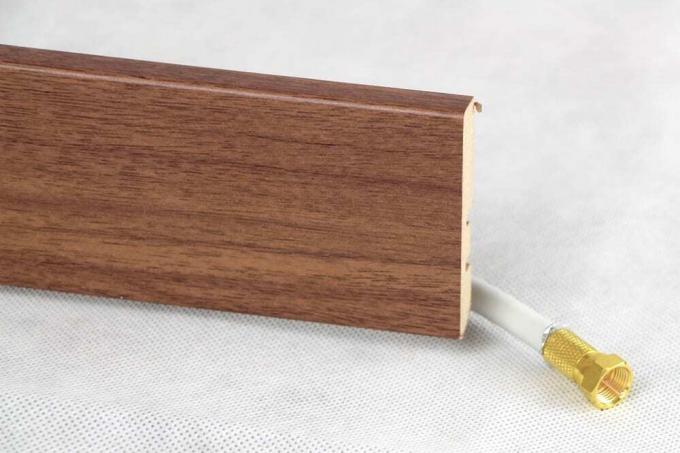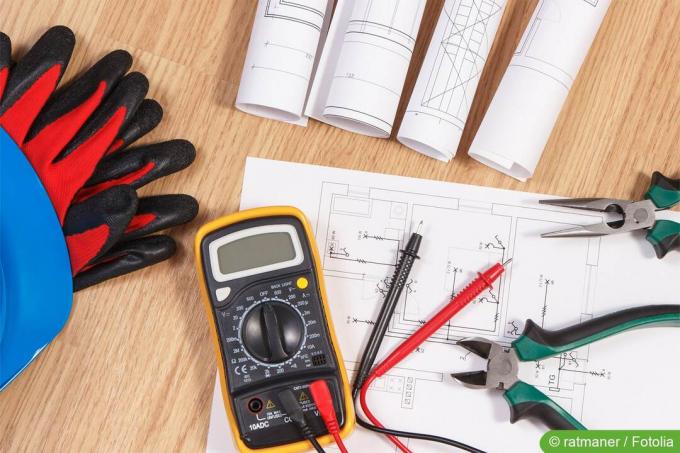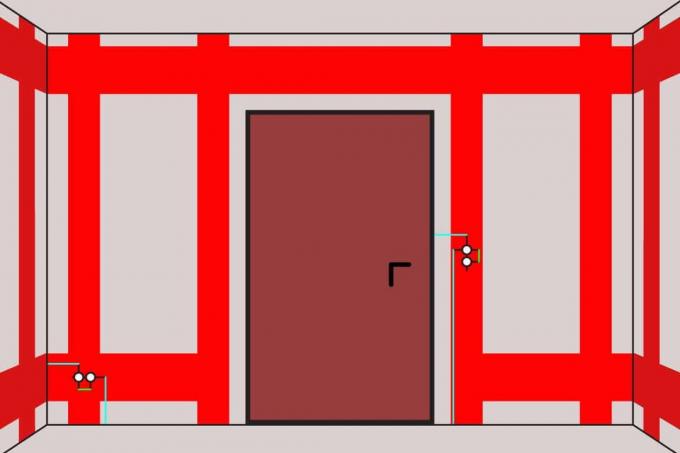

Table of contents
- Guide to satellite reception
- High quality sheathing
- materials for contacts
- special cable
- Lay cables
If you want to lay TV and satellite cables yourself, you should attach great importance to high-quality materials. The cheap alternatives often emit excessively strong electromagnetic radiation, which has a negative effect on transmission and reception. In addition, the satellite dish (correct: satellite dish) and the receiver are in most cases high-priced devices that need a corresponding connection.
Guide to satellite reception
The analogue satellite transmission was switched off a few years ago, nowadays it is only available digitally. Various devices and cable types are required for this in order to convert the digital signals into images on the end device. With the right lines, several receivers can be connected directly and in this way supply a house with different parties. In general, electrical installations may only be carried out by trained specialists. With the right instructions, however, even experienced hobby do-it-yourselfers can do this job. However, an electrician should then carry out a safety check at the end of the work.
- An HDMI-capable flat screen TV is ideal
- A satellite dish is required for reception
- A suitable digital receiver is required for this
- Furthermore, an LNB (low-noise signal converter) is required
- This converter also acts as an amplifier for the signals
- Coaxial line to connect the LNB to the receiver
Tip:
Depending on the number of participating receivers, a distinction is made between various LNB models. The single LNB is only suitable for one participant, but the twin LNB can serve up to two participants. The quad LNB even enables a connection of four to eight participants.
High quality sheathing
An important aspect when laying TV and satellite cables is the shielding, more precisely the sheathing of the conductors in the respective cable system. This sheathing prevents the electromagnetic radiation that occurs during use from having a negative impact on transmission and reception. In most cases, the antenna cables run many meters across the house to reach the satellite dish on the roof. Due to this very long installation, interference radiation can quickly develop.
- Avoid excessively strong electromagnetic radiation by shielding
- These rays can be minimized by cladding
- The longer the cable, the higher the radiation levels
- Robust cables are important
- Nylon sheathing makes the cable systems extremely hard-wearing
materials for contacts

In addition to the quality of the cables, the contacts at the respective interfaces of the devices are also crucial. This includes the television, satellite receiver and recently also the DVB-T receiver, in order to experience all programs on the screen in razor-sharp HD quality. In addition, the connection between the contacts, the cables and the devices should be permanently stable. In this way, frequent plugging and unplugging cannot harm them.
- Pay attention to high-quality contacts
- Inferior goods lead to data loss during transmission
- Plug and socket should be made of the same material
- High-performance precious metals are recommended
- Gold in particular is an excellent conductor
special cable
If you don't want to drill holes in the house walls and window frames for the antenna cable, you should think about purchasing special cables. These press into the seal when the window is closed or can be easily laid under the door frame. The special cables only serve as an add-on for the connection to the satellite dish and the receiver. In addition, the user has various models to choose from in terms of the performance of the cables. If the TV is already HDMI-capable, then a simple antenna cable will no longer fit to connect it to the rest of the system.
- Holes can be avoided with special cables
- Thanks to its flat properties, no drilling is necessary
- Flat cable is approx. 20cm long
- Special cable serves as an extension to the normal antenna cable
- Use HDMI-capable conductors for the corresponding end devices
Tip:
Flat cables with a thickness of 3mm are ideal to maintain good image quality. If the special cable is not thick enough, the picture often deteriorates.
Lay cables

When laying a cable, there are various options for execution. If this should not be visible, it can be placed under or in the plaster of the walls. However, this method has various disadvantages, including a considerable amount of extra work. In addition, the wall in this area must be torn open for subsequent changes and maintenance work. In this way, the cost of laying will add up, since the affected wall will have to be repaired. In most cases, the cables are laid later, so this solution is only possible to a limited extent. If you only lay the cables loosely, you risk them developing into a dangerous tripping hazard.
- Laying in plaster is tedious
- First you have to create slots for the cables
- Then the openings are sealed
- The walls then have to be re-papered or plastered
- Laying a cable with shielded sheathed cables is easy
- Cables can find their place within a cable strip on the plaster
- Alternatively, these can be integrated into the bases of the floors
- Never lay out lines openly, as they are quickly damaged
 Home editorial office
Home editorial office
Learn more about power/electrics

Electric roller shutters no longer go up: what to do?
If you have electric roller shutters, you wouldn't want to be without them. It is all the more annoying when the technology goes on strike and the roller shutters no longer go up. You don't always have to call in an expert. This article explains how to fix errors yourself with a little skill.

Balcony power plant 800, 1000, 1200 watts: what is allowed?
In times of energy crisis and energy transition, solar panels on the balcony offer an easy way to generate and use sustainable electricity. We explain what is behind the so-called balcony power plants and how many watts are allowed during operation.

Fault location: how do I find the defect in the cable?
If a cable in the house or apartment is defective, you usually only notice it because some electrical devices are no longer working. Then you should start looking for the error. Exactly how this fault location works is explained here.

16 ampere fuse: how many sockets / watts possible?
A 16 amp fuse is used in most households. But how many sockets or consumers and how many watts are permitted with them? We show how the maximum load can be calculated and what else needs to be taken into account.

Drilling holes for sockets: dimensions and distances
With the right tool, drilling holes for sockets is no problem. Important: distances should be maintained to the nearest millimeter if possible. Precise work is therefore of particular importance when making a hole for the socket. You'll find more about it here.

Lay and connect underground cable | Laying depth & costs
If underground cables are to be laid and connected, attention must be paid to the correct procedure. Both the laying depth and the connection and connections must be coordinated. Here you can find out how to proceed and the costs to be expected.



